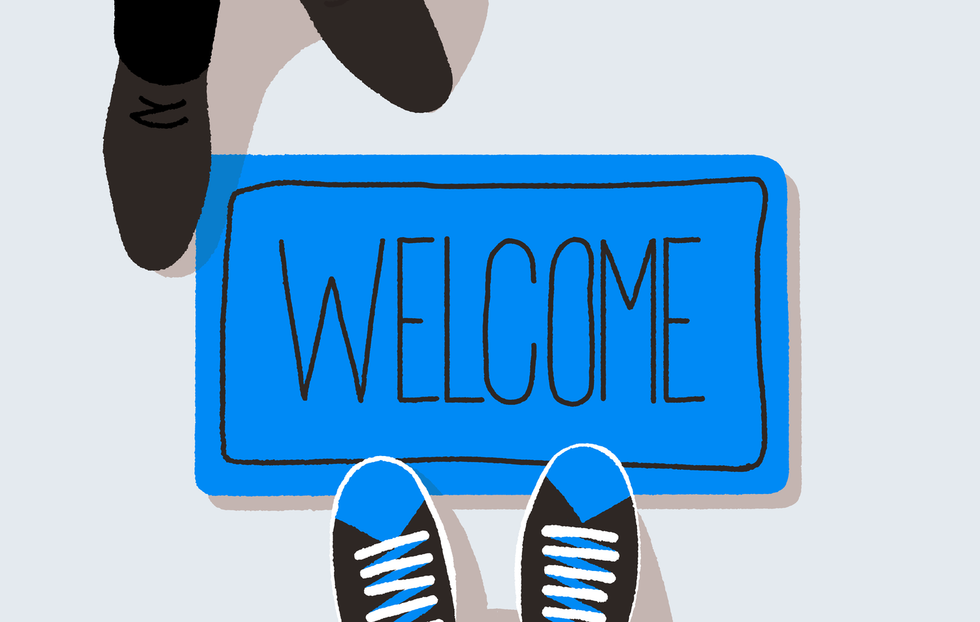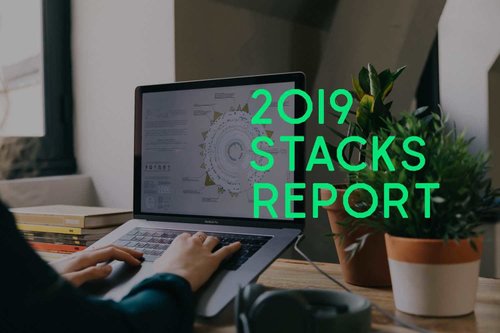How to hire and retain developers from diverse backgrounds?
05 déc. 2019
9min


Content writer with a background in programming and statistics.
Today’s world is driven by technological innovations. Even traditional businesses now count on such innovations to deliver their core products and services, which in turn has a profound effect on their bottom line.
Diversity means understanding and recognizing each other’s differences, such as ethnicity, gender, sexual orientation, age, and abilities. There is now a growing understanding that there is a critical link between diversity and innovation that cannot be overlooked.
It is proven that businesses with a diverse workforce generate more profit due to the innovations this diversity leads to. This is why hiring and retaining the best developers from diverse backgrounds is key to maintaining an edge in any competitive industry. In this piece, we will focus on the effects of ensuring there is diversity in gender and ethnicity.
The link between innovation and diversity
When developers are of different ethnicities, genders, ages, or sexual orientations they bring with them life experiences that alter the way they think about situations. In other words, they broaden the spectrum of viewpoints available within the organization they work for, thus directly increasing the likelihood of finding innovative solutions.
In addition, accepting diversity in the workplace requires the daily exercise of open-mindedness on the part of all employees, something that has been found to enhance the creativity and innovation across the entire company. Since there is no reliable measure of what it means to have an open mind, psychologists have historically focused research on “intellectual humility” instead.
“I prefer an attitude of humility corresponding to the weakness of our intellectual understanding of nature and of our own being”—Albert Einstein.
As Einstein and many other great scientists of recent generations have identified, a sense of intellectual humility is what opens up our minds to the possibilities of discovery in addition to our pre-existing knowledge. It is not an abandonment of our stance, but an acknowledgment of a different point of view that ignites a re-evaluation of our preconceived beliefs.
In a study carried out by Pepperdine University, California, in 2014, intellectual humility was broken down into four components. A quick outline of these reveals that they are the same approaches utilized when someone comes to terms with working with people from different backgrounds:
- Having respect for others’ viewpoints.
- Not being intellectually overconfident.
- Separating one’s ego from one’s intellect.
- Displaying a willingness to revise one’s viewpoint.
When you encounter a person in the workplace who is different from you, you practice the following skills:
- Having respect for their differences.
- Relating to them with humility.
- Relating to them with empathy.
- Demonstrating a capacity to change preconceived ideas about their differences.
Diversity in our place of work allows us to implement the skill of opening up our minds every day. This means that simple situations that occur at work, such as celebrating a colleague’s cultural holiday, making sure you listen carefully to a colleague with a heavy accent, or being patient with a colleague when they talk about their children, can turn into great exercises of acceptance.
While putting together the book Dream Teams: Working Together, its author Shane Snow conducted a series of studies with thousands of American workers to find a correlation between open-minded people and the way they live and work. He concluded that certain activities such as “living in a different country” tend to make us more willing to revise our point of view. This study aligns with neuroscience research into how storytelling helps to build empathy in people. By working with people who are different and opening up our minds every day, we are employing all the components of intellectual humility.
If intellectual humility is the bridge between diversity and creativity, then diversity is intrinsically related to innovation. In a 2017 study carried out on 171 German, Swiss, and Austrian companies, researchers found a strong correlation between the diversity of companies’ management teams and the revenue they derive from innovations. The study not only identified that diversity and innovation moved together to generate what is called “innovation revenue” within the companies, but also the relationship was highly statistically significant across large populations, particularly in organizations that employ more than 10,000 people. The researchers were able to obtain similar results observing diversity across industry background, country of origin, career path, and gender. They also identified that “complex companies”—companies with businesses in a number of industries, such as Siemens, which has a significant increase in diversity at management level—saw larger amounts of innovation-related revenue occurring as a result of diversity. From this, it appears that diversity at the top has a trickle-down effect of innovation through organizations. In addition, five factors—participative leadership behavior, openness to cognitive diversity, strategic priority, frequent interpersonal communication, and equal employment practices—were seen to amplify the effects of diversity-led innovation that are central to increasing innovation revenue for the organization. This is why large technology companies with diversity in their top-level leadership, such as Microsoft, Google, and Stack Overflow, are seeing increased innovation revenue. It should be noted that people who don’t follow the herd often have a strong entrepreneurial spirit, creative drive, and desire to succeed, and these individuals are the leaders who can help to forge a diversity- and, thus, innovation-led organization.
When there’s a culture of diversity-led innovation within the organization, developers from different backgrounds are no longer surprised by diversity. They are working with diversity every day, fostering greater intellectual humility within members of the team. In turn, these team members are more willing to revise pre-existing knowledge for better ideas that will allow innovation to grow organically.
What does it take to hire the best from a diversity of backgrounds today?
Hiring from organizations dedicated to promoting diversity
In the US, organizations such as Women Who Code, Girls Who Code, and the Grace Hopper Fullstack Academy are all helping to train female programmers, as well as assist them in getting jobs and networking effectively within their industries. Women still only make up roughly 20% of the technology workforce, but they are no longer as rare as they once were and, while many leave mid-career, younger women are coming through to take their place.
For other minority programmers, Black Girls Code, Code2040, and Ada Developers Academy are just some of the organizations that are helping these graduates to enter the workforce as developers.
Hiring from a more diverse pool of applicants
As everyone rushes to learn to code, the pool of job applicants has become more diverse than ever. Attending universities with notable computer-science programs is no longer the main route into a successful career in technology: The current proliferation of coding boot camps all over the world means that it’s easier for job applicants to learn how to apply knowledge and real-life projects in a workplace scenario more effectively, ultimately contributing to the diversity of applicants. Hackathons held internationally across multiple industries, and sponsored by technology companies, also help career-changers and mid-career job seekers meet prospective employers. Meanwhile, coding forums such as Stack Overflow, GitHub, and Quora help programmers showcase their portfolio of knowledge to potential employers worldwide. .
Filling your diversity quota with competitive candidates
To ensure diversity, HR managers often try to fill quotas with programmers from the relevant backgrounds. However, just filling these quotas is not a great solution—often this can be seen to weaken the diversity argument. Technologists hired or promoted “just to fill the quotas” might not always have had the full training the position requires. When they are unable to perform their jobs adequately, the whole “ecosystem” of employees from diverse backgrounds suffers and organizations become more reluctant to hire according to diversity in the future.
A more successful strategy for hiring developers from different backgrounds has been to take them on straight out of boot camps, internship programs, and coding competitions, where minority programmers often compete for jobs based on merit. At the same time, mentorships tailored toward providing minority technologists equal opportunity within the company allow them to gain the skills required to step up in their roles if they are successful.
Hiring developers from minority backgrounds should also mean hiring the “best” who have been trained adequately. It also means that companies need to commit enough resources to help them assimilate into the existing work culture and thrive, such as providing them with continued training to level the playing field.
What does it take to retain the best from a diversity of backgrounds today?
Building an inclusive company culture that offers training and equal opportunities for advancement
Gender example
Retaining a good programmer is not easy, but retaining a good programmer from a minority background is even harder. Companies have to pay attention not only to the work the programmer is doing, but also the company culture and the bias within the team environment. Factors such as work-life balance, harassment, and advancement opportunities need to be considered as well. With the #MeToo movement, an increased number of women in technology are citing cases of harassment as the main reason for leaving their jobs. On top of that, according to Harvard Business Review, 41% of female technology employees leave their industry in the 10th year on the job, with many of the participants from the study reporting that when work-life balance involves family life, there’s an unrealistic expectation of how they should juggle that. At the same time, due to motherhood, many female technology employees mention their “maternity risk” as a reason for being passed over for promotions, raises, and other opportunities.
To retain female technologists mid-career, their employers need to provide a “safe environment,” one where they can feel just as nurtured as any other technologist, with clear consequences for harassment as well as a “compassionate” attitude toward women who have children during their career.
Having managers who understand work-life issues surrounding raising a child creates a culture that encourages good female developers to remain within the industry. Hiring temporary developers to take care of the “maternity risk” is a step in that direction, as is ensuring that on-site childcare and part-time work-from-home opportunities are available.
Ethnicity example
It’s been almost 3 decades since the first African-American employee was hired to work at Intel. Yet, according to recent figures, in Silicon Valley, the number of African-American and Hispanic executives is still lower than 1% and 2% respectively. Also, during the past 2 decades, diversity quotas at technology companies often lumped all non-white minorities into the same category, with Asians and other immigrants making up the bulk of the diversity hires.
African-Americans and Hispanic employees often break into the industry through minority apprenticeships and internships dedicated to helping minorities succeed in the technology industry. However, the effect of being among a low number of minority hires who have similar circumstances can lead to feelings of loneliness at best, and the impression of having to survive in a hostile work environment at worst. The result can thus end up being disempowering rather than positive.
Many minorities working in the technology industry acknowledge that they feel racial discrimination is almost to be expected. Often the discrimination is subtle and non-hostile, but over the years, a sense of alienation eventually breeds significant frustration. For instance, a lack of training and advancement seems to be the reason many minority hires remain in junior roles. When companies are not providing adequate training for these employees, they can therefore be seen to be saying, “We hired you to fill our diversity quota.”
At the heart of successful retention, therefore, is mentorship and opportunities—a career path laid out for advancement. Indeed, opportunities to advance should be viewed as another variable in the existing compensation package.
Using emotional intelligence to acknowledge biases, encourage communication, and work toward acceptance
Interviews conducted with many developers from diverse backgrounds find that most cite a “hostile working environment” as the no. 1 cause for them leaving the technology sector mid-career. This working environment is also seen as contributing to a culture of closed-mindedness that in turn demotivates innovation.
A recent Inc. article cites the culture of disrespect being the catalyst for “hostile working environments” and lack of opportunity in the workplace for minority developers. Spending long hours in front of the computer without much human interaction can cause a subtle sense of detachment to creep into a developer’s way of being. If not addressed daily, this can feed into subtle biases that are carried into their way of working. When a developer has biased feelings toward people of color, they might act in a passive-aggressive way, such as not clarifying requirements for work, assuming there’s a knowledge deficiency, or talking over people of color in meetings. Sometimes, inappropriate jokes may be passed around under the presumption that the minority developer should also consider them funny.
To help developers come to terms with their own biases is just one way for developers to become aware of their passive-aggressive actions. We all have biases and we may not always realize it. This is why open communication is essential. Only when we openly air our biases in a productive manner and receive empathetic feedback can we work to improve how we treat others, as well as improve the culture in our workplace.
In between hectic project deadlines and development cycles, helping employees to vent work frustrations healthily is another way to bridge the gaps in communication. Instead of finding someone to blame, internal issues and frustrations should be fixed by looking at them with a certain optimism.
The normalization of “differences” in the workplace can also help developers to be more accepting. Through emotional-intelligence education, we can all come to terms with our differences, meaning that when we encounter them in others, they don’t feel as “scary.” Over time, when differences are normalized, everyone, including minority employees, stop identifying with the differences and instead embrace the differences of others.
It is crucial to remember, though, that retention is not just about taking one diversity course or attending one emotional intelligence seminar. It is about practicing the skills of emotional intelligence, acceptance, and open-mindedness in projects, as well as in social situations in the workplace.
Through constant practice and resolution of conflicts, the workplace organically turns from a hostile environment to a friendly one.
Conclusion
In summary, diversity and retention are not just buzzwords. Diversity has been the driver for innovation in our technology industry since the Internet Age began. Increasing diversity hires and solving these issues surrounding their retention allows innovation to thrive.
At the heart of hiring for diversity and retention are complex issues such as bias, work-life support, and company culture. These are not issues that can be solved overnight. Acknowledging biases and working on issues in our work environment makes it easier to both hire developers from diverse backgrounds and improve the retention rate. In turn, developing bright minds regardless of gender or race enables companies to thrive and innovate.
This article is part of Behind the Code, the media for developers, by developers. Discover more articles and videos by visiting Behind the Code!
Want to contribute? Get published!
Follow us on Twitter to stay tuned!
Illustration by Brice Marchal

Inspirez-vous davantage sur : Career hacking
Because being a developer is not just about coding, we want to share dedicated tips on soft skills and career paths, help you stay up-to-date with your favorite technologies, and learn more about the job market.

Computing’s Gender Divide: Why Tech Is Stuck in the 1980s
Discover why the percentage of women who held computing-based jobs has been in a steady decline since the 1980s.
14 sept. 2020

5 Remote-work Lessons From the Open-source Community
The open-source movement has a few things it can share about remote working with the wider software-development community.
09 juin 2020

2019 Stacks Report
The most-mentioned technologies in the job specifications published on WTTJ's website in 2019 and the average number of applicants per technology.
21 avr. 2020

Engineering Management: An Interview with Saad Rehmani
Saad Rehmani, the VP of Engineering at Reddit, shares his most effective management strategies to handle the COVID-19 crisis.
07 avr. 2020

Engineering Management: An Interview with Rich Archbold
Rich Archbold, the VP of Engineering at Intercom, explains how to develop a management style and how to transition to managing other managers.
17 mars 2020
La newsletter qui fait le taf
Envie de ne louper aucun de nos articles ? Une fois par semaine, des histoires, des jobs et des conseils dans votre boite mail.

Vous êtes à la recherche d’une nouvelle opportunité ?
Plus de 200 000 candidats ont trouvé un emploi sur Welcome to the Jungle.
Explorer les jobs